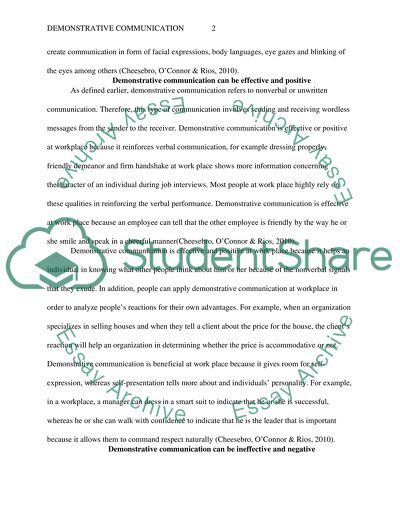Cite this document
(“Describing demonstrative communication. Demonstrative communication Essay”, n.d.)
Describing demonstrative communication. Demonstrative communication Essay. Retrieved from https://studentshare.org/miscellaneous/1602076-describing-demonstrative-communication-demonstrative-communication-includes-nonverbal-and-unwritten-communication-and-involves-such-things-as-facial-expressions-tone-of-voice-body-language-and-so-forth
Describing demonstrative communication. Demonstrative communication Essay. Retrieved from https://studentshare.org/miscellaneous/1602076-describing-demonstrative-communication-demonstrative-communication-includes-nonverbal-and-unwritten-communication-and-involves-such-things-as-facial-expressions-tone-of-voice-body-language-and-so-forth
(Describing Demonstrative Communication. Demonstrative Communication Essay)
Describing Demonstrative Communication. Demonstrative Communication Essay. https://studentshare.org/miscellaneous/1602076-describing-demonstrative-communication-demonstrative-communication-includes-nonverbal-and-unwritten-communication-and-involves-such-things-as-facial-expressions-tone-of-voice-body-language-and-so-forth.
Describing Demonstrative Communication. Demonstrative Communication Essay. https://studentshare.org/miscellaneous/1602076-describing-demonstrative-communication-demonstrative-communication-includes-nonverbal-and-unwritten-communication-and-involves-such-things-as-facial-expressions-tone-of-voice-body-language-and-so-forth.
“Describing Demonstrative Communication. Demonstrative Communication Essay”, n.d. https://studentshare.org/miscellaneous/1602076-describing-demonstrative-communication-demonstrative-communication-includes-nonverbal-and-unwritten-communication-and-involves-such-things-as-facial-expressions-tone-of-voice-body-language-and-so-forth.


